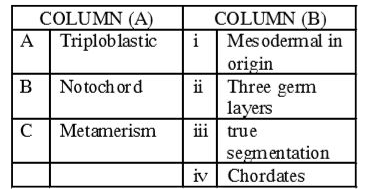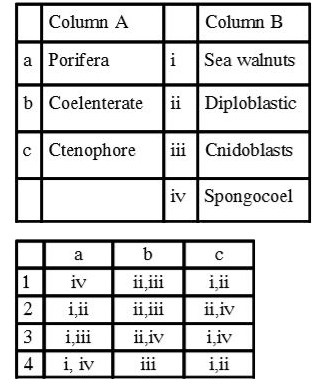Choose the correct answer from the options A,B,C&D given: The most electronegative element from the following elements is:
Magnesium
Chlorine
Aluminium
Sulphur
To solve the question of identifying the most electronegative element from a given set of options, we can follow these steps:
1. Understand Electronegativity:
- Electronegativity is the ability of an atom to attract electrons towards itself in a chemical bond. The higher the electronegativity, the stronger the atom's ability to attract electrons.
2. Know the Trend in the Periodic Table:
- Electronegativity increases as you move from left to right across a period in the periodic table. This is because the number of protons increases, which enhances the positive charge and the ability to attract electrons.
- Electronegativity decreases as you move down a group. This is due to the increase in the number of electron shells, which makes it harder for the nucleus to attract additional electrons.
3. Identify the Elements in the Options:
- Let's assume the options provided are: A) Magnesium (Mg), B) Aluminium (Al), C) Sulphur (S), D) Chlorine (Cl).
- Magnesium and Aluminium are metals located on the left side of the periodic table, while Sulphur and Chlorine are nonmetals located on the right side.
4. Analyze the Position of Each Element:
- Magnesium (Mg): Located in Group 2, it has low electronegativity.
- Aluminium (Al): Located in Group 13, it has slightly higher electronegativity than magnesium, but still low compared to nonmetals.
- Sulphur (S): Located in Group 16, it has higher electronegativity than both magnesium and aluminium.
- Chlorine (Cl): Located in Group 17, it is one of the most electronegative elements in the periodic table.
5. Conclusion:
- Comparing the electronegativities of the elements, Chlorine (Cl) is the most electronegative element among the options provided. Therefore, the correct answer is D) Chlorine (Cl).
Final Answer:
The most electronegative element from the given options is D) Chlorine (Cl).
- Electronegativity is the ability of an atom to attract electrons towards itself in a chemical bond. The higher the electronegativity, the stronger the atom's ability to attract electrons.
- Electronegativity increases as you move from left to right across a period in the periodic table. This is because the number of protons increases, which enhances the positive charge and the ability to attract electrons.
- Electronegativity decreases as you move down a group. This is due to the increase in the number of electron shells, which makes it harder for the nucleus to attract additional electrons.
- Let's assume the options provided are: A) Magnesium (Mg), B) Aluminium (Al), C) Sulphur (S), D) Chlorine (Cl).
- Magnesium and Aluminium are metals located on the left side of the periodic table, while Sulphur and Chlorine are nonmetals located on the right side.
- Magnesium (Mg): Located in Group 2, it has low electronegativity.
- Aluminium (Al): Located in Group 13, it has slightly higher electronegativity than magnesium, but still low compared to nonmetals.
- Sulphur (S): Located in Group 16, it has higher electronegativity than both magnesium and aluminium.
- Chlorine (Cl): Located in Group 17, it is one of the most electronegative elements in the periodic table.
- Comparing the electronegativities of the elements, Chlorine (Cl) is the most electronegative element among the options provided. Therefore, the correct answer is D) Chlorine (Cl).
The most electronegative element from the given options is D) Chlorine (Cl).
Topper's Solved these Questions
- PERIODIC TABLE (PERIODIC PROPERTIES AND VARIATION OF PROPERTIES)BOOK - ICSECHAPTER - PERIODIC TABLE (PERIODIC PROPERTIES AND VARIATION OF PROPERTIES)EXERCISE - ADDITIONAL QUESTIONS
74 Videos
- PERIODIC TABLE (PERIODIC PROPERTIES AND VARIATION OF PROPERTIES)BOOK - ICSECHAPTER - PERIODIC TABLE (PERIODIC PROPERTIES AND VARIATION OF PROPERTIES)EXERCISE - ADDITIONAL QUESTIONS (Fill in the blanks with the appropriate word/s in each case.)
24 Videos
- PERIODIC PROPERTIES AND VARIATIONS OF PROPERTIESBOOK - ICSECHAPTER - PERIODIC PROPERTIES AND VARIATIONS OF PROPERTIESEXERCISE - ASSERTION AND REASON BASED QUESTIONS
5 Videos
- PRACTICAL CHEMISTRY BOOK - ICSECHAPTER - PRACTICAL CHEMISTRY EXERCISE - Questions from Previous ICSE Board Papers (2017)
2 Videos
Similar Questions
Knowledge Check
The most electronegative element is
ASodiumBAluminiumCBromineDFluorineChoose the correct option from the following :
AIn the electrophilic substitution of toluene with Br2,iron (III) bromide acts as a Lewis acid.BIn the reaction of toluene with Cl2/FeCl3, ortho and para isomers are easily separated.CSimilar reaction with iodine is reversible in nature.DAll of these.
Oxygen is the most electronegative element in the periodic table.
View SolutionChoose the s-block element from the following:
View SolutionChoose the correct answer from the given four options :
NADP is expanded as
View SolutionChoose the correct answer from the options given below :
Which of the following properties do not match with elements of the halogen family?
View SolutionMatch the columns and choose the correct answer from the options given below

View SolutionMatch the columns and choose the correct answer from the options given below

View Solution
